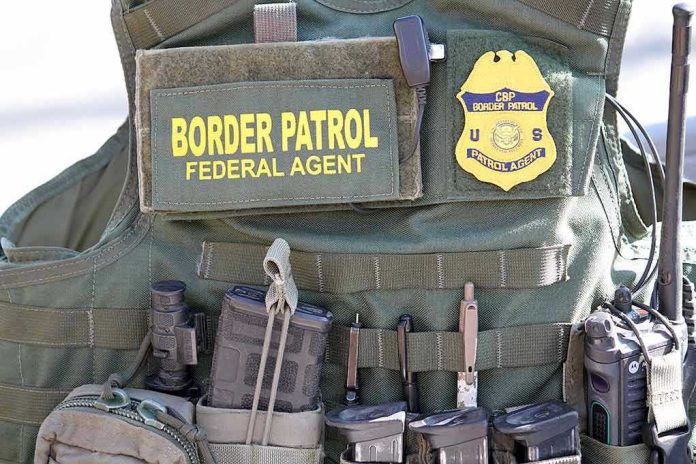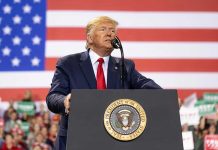
When protests turn volatile, the heart of a city pulsates with the tension of unresolved conflicts and clashing ideologies.
Story Snapshot
- Escalation of protests against ICE in Portland leads to violence.
- Federal agents use tear gas and pepper spray to disperse crowds.
- Political divide intensifies over federal intervention in local matters.
- Protests reflect broader national debates on immigration enforcement.
Protest Escalation in Portland
Portland became the epicenter of protest turmoil when anti-ICE demonstrators clashed with law enforcement outside the Immigration and Customs Enforcement facility in South Portland. Federal agents resorted to tear gas, pepper spray, and flashbangs to manage the escalating violence. The clashes marked the culmination of a series of protests that had been intensifying since late September, following President Trump’s federalization of the Oregon National Guard.
Chaos Breaks Out in This City After Anti-ICE Protesters Clash With Police https://t.co/7tyI5Kc70c
— MickiAnn (@MickiAnnOH) November 15, 2025
The protests, which began as part of a peaceful “No Kings” rally, quickly spiraled into chaos as tensions between protesters, counter-protesters, and law enforcement reached a boiling point. The use of chemical munitions by federal agents highlighted the federal-local tension over jurisdiction and protest management, drawing criticism from both local officials and civil rights advocates.
Federal Intervention and Local Response
President Trump’s decision to invoke Title 10 and deploy federal agents to Portland has been a significant point of contention. Local lawmakers, including Oregon’s Democratic senators and representatives, have vehemently opposed the federal presence, citing excessive force and potential harm to the community. The Portland Mayor has echoed these sentiments, urging for the withdrawal of federal agents to de-escalate the situation.
Despite the local opposition, DHS Secretary Kristi Noem defended the federal response as necessary for maintaining public safety, even threatening to increase the federal presence in Portland. This has only served to deepen the political divide, with national figures supporting strong federal intervention while local officials advocate for protester rights and local autonomy.
Impact on Portland’s Community
The ongoing unrest has had profound implications for Portland’s community. Residents in the vicinity of the ICE facility have expressed concerns over safety and the disruption caused by the nightly protests. Businesses in the area have faced economic setbacks due to the ongoing instability, while the community grapples with heightened polarization and trauma.
For protesters, the clashes have underscored the broader struggle for civil rights and accountability in immigration enforcement and police tactics. The legal and physical repercussions for those involved in the protests remain a significant concern, with multiple arrests made during the recent unrest.
Future Implications and Ongoing Debates
The events in Portland are likely to have long-term ramifications on federal-local relations, legal precedents regarding protest management, and the national discourse on immigration policy. The use of chemical munitions and federalized National Guard forces has drawn national attention, prompting debates over the balance between public safety and civil rights.
As protests continue, the city remains a focal point for activism and resistance against federal intervention. Legal challenges to federal actions are pending, and the outcomes could significantly influence the future of protest management and federal-local dynamics. The situation in Portland underscores the complexity of navigating protest rights, law enforcement tactics, and immigration enforcement in today’s politically charged climate.













